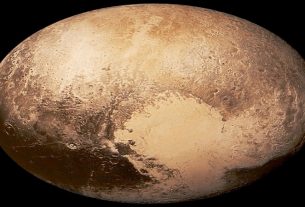SpaceX proposes to use its Starship spacecraft to rapidly deploy its second-generation Starlink constellation. This approach could help provide denser rural coverage while limiting the number of satellites in orbit.
SpaceX officially plans to launch 12,000 Starlink satellites into low orbit (LEO). However, we do know that the company plans to offer an additional 30,000 satellites in the coming years, as evidenced by applications for authorization filed with the International Telecommunication Union (ITU) in 2019.
If such a project succeeds, it would therefore bring the number of Starlink satellites to 42,000. Since then, the situation has changed with the development of the Starship. Intended to drop cargo and astronauts on the Moon and then on Mars, the spacecraft could also allow SpaceX to release its own satellites more efficiently, according to SpaceNews.
Less than 30,000 satellites in orbit
Specifically, SpaceX proposes to use its spacecraft to rapidly deploy its second-generation constellation. This approach could help provide denser rural coverage while limiting the number of satellites in orbit. The Starlink configuration compatible with the Starship would include 29,988 satellites at altitudes between 340 and 614 kilometers in nine inclined orbits.
In this way, SpaceX could provide “denser polar coverage to rural subscribers” as well as “national security and first responder customers” to make “network performance more consistent.”
A second configuration revised by SpaceX, filed August 18 with the Federal Communications Commission, plans to continue to rely on Falcon 9 rockets, distributing 29,996 satellites over twelve orbital inclinations at altitudes between 328 and 614 kilometers d ‘altitude. So, again, using the Falcon 9 would not involve a larger constellation, as the company initially intended.
If two configurations are proposed here, SpaceX said it prefers the one involving the Starship. This spacecraft would indeed allow the satellites to enter service “a few weeks after launch, rather than months.”
Mitigated threats
The increasingly congested space environment is of real concern to astronomers and regulators around the world, as a growing number of constellations plan to deploy thousands of additional satellites in the coming years. With its Starlink project, SpaceX concentrates much of these concerns. On this point, Elon Musk nevertheless wants to be reassuring.
The Gen2 satellites will indeed be “a little bigger and generate more power than originally expected,” he agreed. However, as with the more than 1,600 Starlink satellites the company currently operates in orbit, the second generation will rely on collision avoidance software and on-board propulsion to mitigate threats.
In addition, at altitudes lower than those of the first generation Starlink constellation satellites, the second generation will be less illuminated by the Sun. They will therefore pose fewer reflection problems for astronomical observations.

Email: ben@satprwire.com Phone: +44 20 4732 1985
Ben has been listening to the technology news for quite some time that he needs just a single read to get an idea surrounding the topic. Ben is our go-to choice for in-depth reviews as well as the normal articles we cover on a normal basis.



